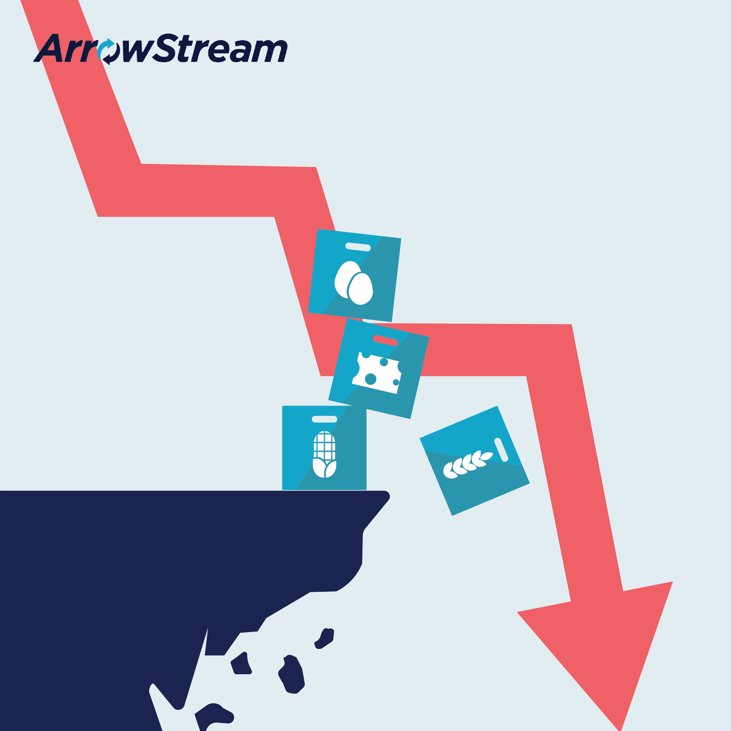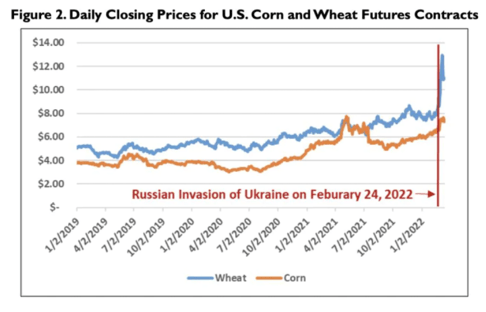 Disruptions to the global food supply have been consistent and are expected to continue perpetually. After recently enduring the pandemic, the global food supply chain has faced inflation, natural disasters, and supply shortages resulting from the Russian-Ukrainian War.
Disruptions to the global food supply have been consistent and are expected to continue perpetually. After recently enduring the pandemic, the global food supply chain has faced inflation, natural disasters, and supply shortages resulting from the Russian-Ukrainian War.

Ukraine and Russia are both among the world’s principal producers and exporters of wheat, barley, maize, meslin, and cereal grains – and have both been largely removed from the global commodity market due to the Russian military occupation of Ukraine and international economic sanctions implemented against Russia. Ukraine and Russia are also major producers and exporters of petroleum and natural gas, and these fuels are vital for the food supply chain’s storage, shipping, and distribution. Russia and Ukraine also comprise 28% of global exports of nitrogen and phosphorus-based fertilizers and this is further increasing the price of grain production. The shortage of food, fuel, and fertilizer in the international market has resulted in dramatic price increases which are compounded by unprecedented levels of inflation.
The economic consequences of the pandemic – most notably, inflation – are also causing a seismic increase in global food shortages. In 2022, the United Nations World Food Programme is spending 30% more money than they were in 2019 for the same amount of food. The increase in the inflation rate in the United States in March 2022 reached a forty-year high. The consumer price index increased by 8.5% since last year, and experts believe that the inflation rate will be an ongoing problem. In the words of Wells Fargo economist, Sam Bullard, “The descent in inflation is going to be painfully slow.”

"All of this is a double whammy, if not a triple whammy,” said Bart Melek, global head of commodity strategy at TD Securities, “We have geopolitical risk, higher input costs, and basically shortages.” The food market has been hit with one compounding effect after another, and experts anticipate that the worst is still yet to come. “It’s difficult to overstate the magnitude of our concerns,” said Caitlin Welsh, director of the global food security program at Washington’s Center for Strategic and International Studies. The global food supply chain is not as versatile as you might think. Most of the world’s food processing facilities and equipment are geared toward manufacturing products with a certain ingredient and though another grain or crop might be available, the means of processing, storage, and distribution are often unsuitable for alternatives.
The United Nations had already estimated in 2021 that world hunger was at its worst in fifteen years as a result of the pandemic, and it is now getting even worse. The number of people around the world facing acute food shortages has more than doubled over the last few years – from 135 million in 2019 to 276 million in 2022.
With disruptions across the global food supply chain and experts anticipating that things will only get worse, it has become absolutely imperative for restaurants to secure the integrity of their supply chains. ArrowStream is the leading foodservice supply chain management platform and has already helped countless restaurant chains insure the resilience and efficiency of their supply chains. To find out more about the impact of global politics on commodity prices and supply chains, register for our upcoming webinar here.
